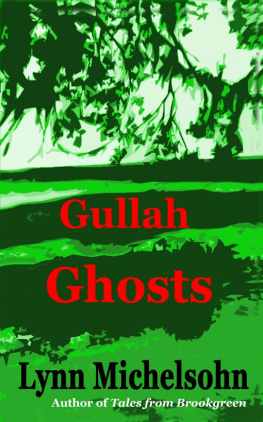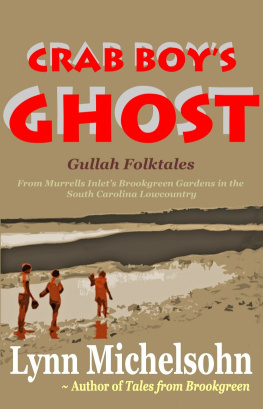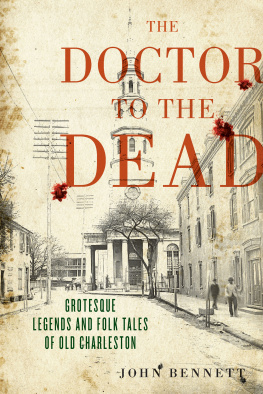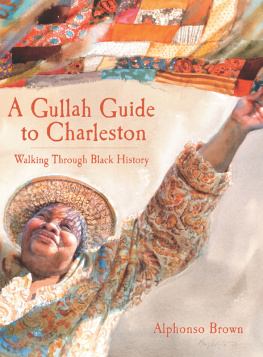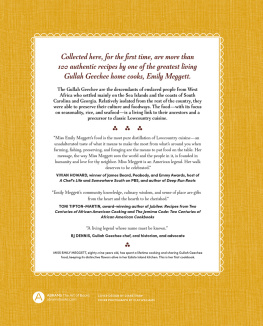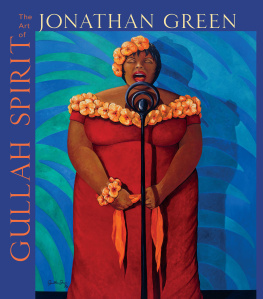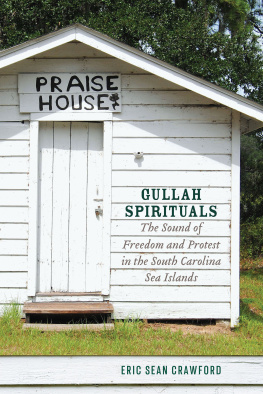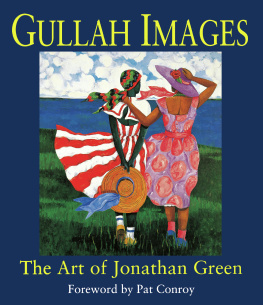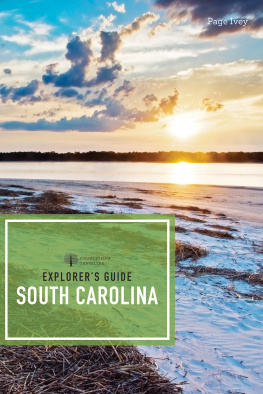Gullah Ghosts
Stories and Folktales from Brookgreen Gardens
in the South Carolina Lowcountry with
Notes on Gullah Culture and History
by
Lynn Michelsohn
Published by Cleanan Press,Inc.
Roswell, New Mexico USA
Copyright 2004 Lynn Michelsohn
Table of Contents
Preface
These are some of the stories told by MissGenevieve and Cousin Corrie, two charming Hostesses at BrookgreenGardens in the South Carolina Lowcountry during the middle of theTwentieth Century (described in the chapter, ). They alo appear inmy longer collection, Tales from Brookgreen: Folklore, GhostStories, and Gullah Folktales from the South CarolinaLowcountry. I hope you enjoy them.
Lynn Michelsohn
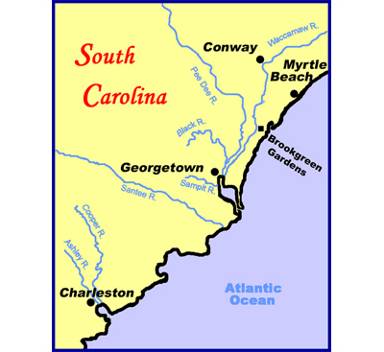
Chapter 1. ACultural Note: The Gullah Language
Miss Genevieve, one of the Hostesses atBrookgreen Gardens in the mid-Twentieth Century, explained thedevelopment of the Gullah language spoken by descendents of slavesin the South Carolina Lowcountry like this...
Nobody can tell you for sure how the Gullahlanguage developed but people who have studied it do have some ideaabout its history and this is how they explain it.
Slaves brought to South Carolina came fromdifferent parts of West Africa. Each African area and tribal grouphad its own language and customs. When slaves arrived on Lowcountryplantations, communication was a big challenge. Slaves and plantersspoke different languages and often fellow slaves even spokedifferent languages yet all had to understand each other wellenough to live and work together.
A pidgin language developed that containedwords and grammatical structures from English and from variousAfrican languages. Planters and overseers kept speaking English andslaves kept speaking their own various languages but each alsolearned to speak the pidgin language, called Gullah, to communicatewith each other. People who study languages tell me that at thisstage Gullah was a pidgin language because no one spoke it as hisnative language but those speaking different languages used it tocommunicate with each other. Some people think the name Gullah camefrom the word Angola, which was the homeland of many of theslaves.
As new generations of slaves were born inthe Lowcountry, these children grew up speaking Gullah as theirnative language. Gullah became a creole language, which is onewhose words and grammar are a combination of different languagesbut one which is now the native language of a group of people, inthis case, the descendants of the slaves brought from Africa.
Planters and other whites continued to speakEnglish, of course, but also spoke Gullah to communicate with theirworkers. Planters and their families often learned Gullah aschildren from nurses and other household servants who helped raisethem.
Chapter 2. Crab Boys Ghost
Cousin Corrie loved ghost stories andanything related to the supernatural, from ancient Egyptian talesof the mystical powers of cats to present-day theories of ESP. Sheoften entertained teenage cousins with table turning, anold-fashioned group activity designed to contact the spirit world.Like many in the Lowcountry, Cousin Corrie had grown up acceptingthe spirit world as just another aspect of reality, whether thisspirit world was based on religious beliefs preached from theSunday pulpit or on the folklore of haunts, hags, and plat-eyesthat she learned from her Gullah family servants. The story of CrabBoy was one she heard as a child in her home at Woodlawn on thecreek at Murrells Inlet. She especially liked telling it tochildren.

Low Tide
When I was a child we lived in a big woodenhouse right on the seashore at Murrells Inlet. Sometimes, early inthe morning we would hear faint but urgent screams coming over andover from far down the creek toward Drunken Jack Island, behindwhat is now Huntington Beach. My mother, who didnt stand for anysuch nonsense, always said it was just a peacock calling from adistant farmyard. But the Gullah women who helped my mother in thekitchen told us children that it was the ghost of Crab Boy cryingfor help. They called such spirits of children who had diedunnatural deaths drolls.
Saltwater creeks and marshes between sandybarrier islands like Huntington Beach and the mainland seashore arefull of sea life. This sea life becomes delicious seafood for thosewho know how to catch it. As children, my brothers and sisters andI caught fish, raked oysters, and dug for clams. My father andbrothers caught shrimp in hand thrown nets. We easily attractedblue crabs with a fish head tied to a length of twine as they swamin on the rising tide. Once a crab was feeding, we pulled the fishhead in slowly until the crab was close enough to swoop it upwith a dip net. Sometimes we would see crabs just resting along thewaters edge and could scoop them up without even needing fishheads.
Oysters, blue crabs, and clams all makedelicious eating but the greatest delicacy of the marsh is thestone crab, with sweet juicy meat in its giant claw. Catching stonecrabs requires a very different technique than catching blue crabshowever. Stone crabs do not swim in and out with the tide. Theylive deep in burrows in the mud banks along the creeks. The burrowsare only exposed at low tide. Catching a stone crab requires ahighly skilled technique and a lot of courage. That giant claw thatis so delicious to eat can crush a finger with little effort.
The best way to catch a stone crab is towait for low tide, then walk along the edge of the creek lookingfor stone crab burrows. When you see one, which is just about asbig around as your fist, you slowly slide your hand and arm wayinto it until you feel the crab with your fingers. Then you gentlygrab the crab just the right way and slip it out of the burrowand into your bucket. If the crab senses danger it will wedgeitself in its hole with its legs and shell and attack with thatgiant claw.
Now this method of catching stone crabs hasbeen carefully explained to me, dont you understand? I would nevertry it myself. Not after growing up hearing stories of CrabBoy!
No one ever seemed to know what Crab Boysreal name was. He wasnt from around these parts. He came down tostay with relatives that lived here at Murrells Inlet near theshore behind Drunken Jack Island on land that is now part ofBrookgreen Gardens. Before Freedom, Crab Boys uncles had beenslaves here on the Waccamaw Neck on Brookgreen Plantation, or wasit at The Oaks? Anyway, their job had been to provide all kinds ofseafood for the planters table. After Freedom, they remained atMurrells Inlet living off the bounty of its creeks and marshes.
Crab Boys uncles and cousins caught allmanner of seafood that they sold to the people living in cottagesfrom Magnolia Beach all the way to the north end of Murrells Inletat Sunnyside. Stone crab claws brought the most money but stonecrabs took patience and skill to catch.
Crab Boys relatives took him along as theygathered their harvest from the creeks. He learned to cast a shrimpnet and to gather oysters carefully so as not to cut himself ontheir razor sharp shells. However his uncles warned him repeatedly,Never go after stone crabs the way we do until you are mucholder.
Did he listen? Of course not!
One day when the tide was just past its lowpoint Crab Boy was exploring the maze of creeks by himself when hesaw a perfect stone crab hole. He had seen his uncles pull crabsout so easily that he was sure he could do it too.

